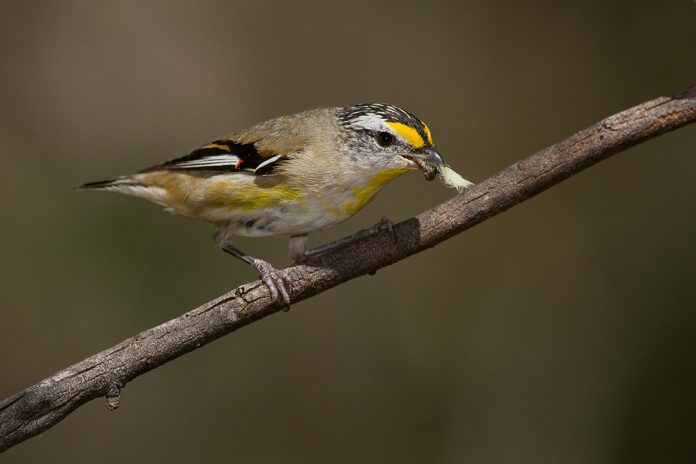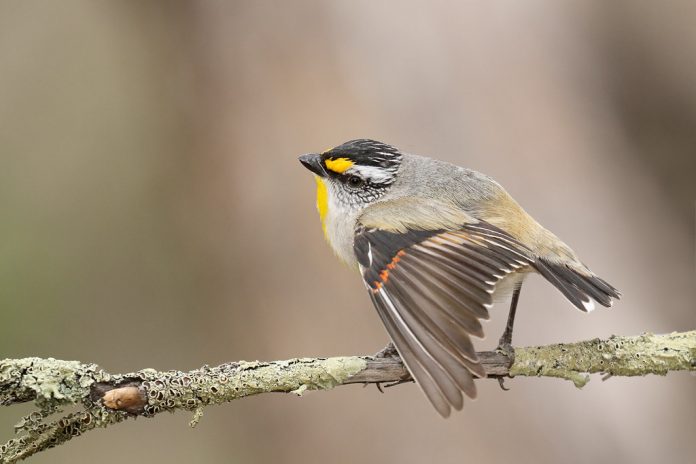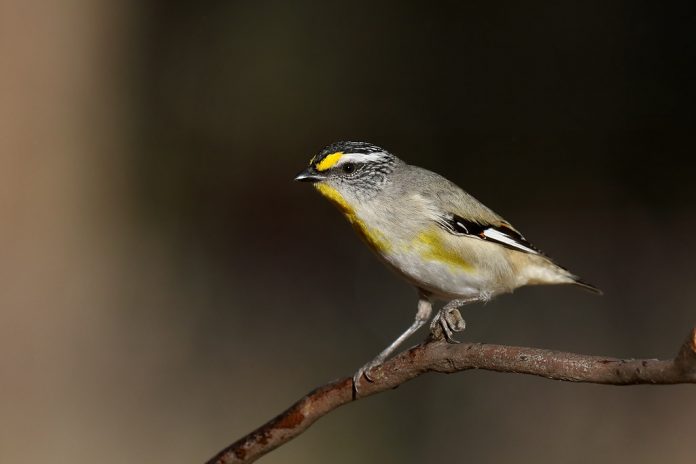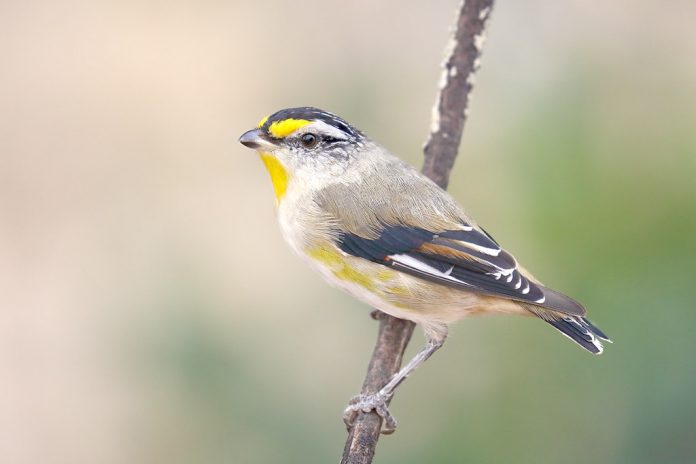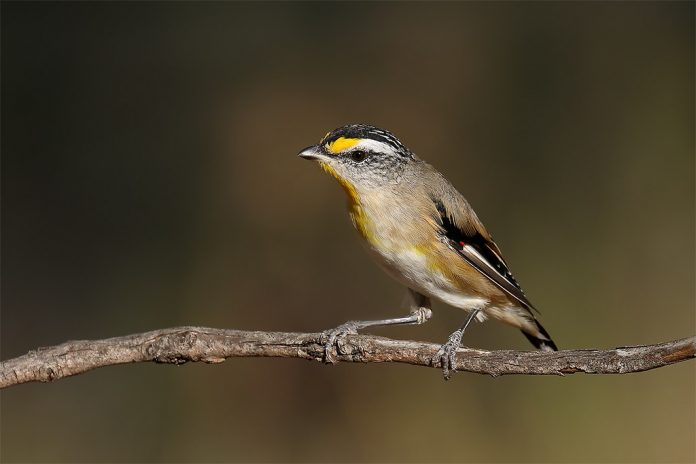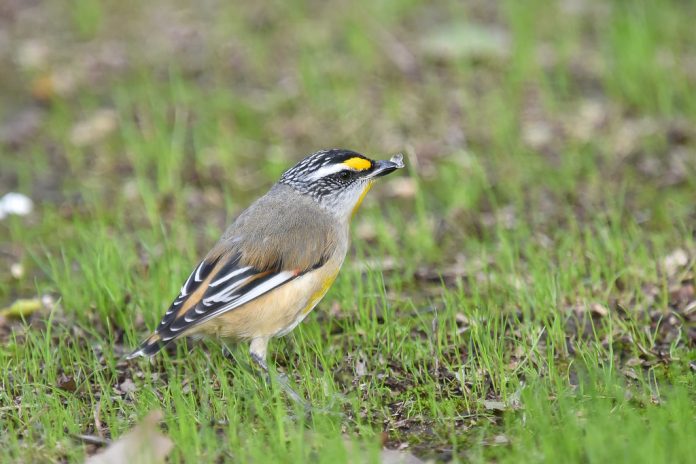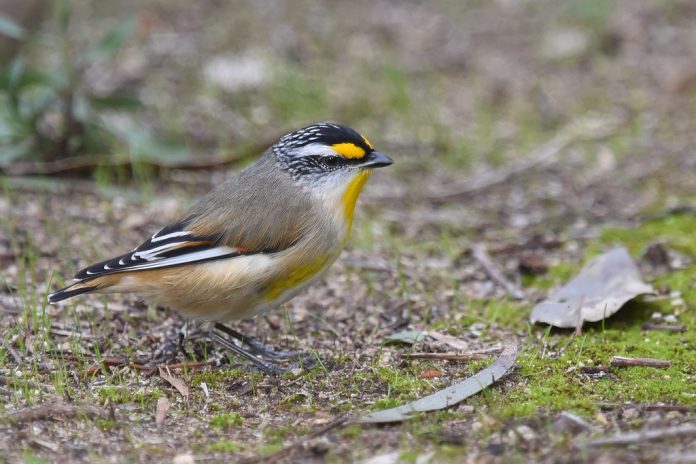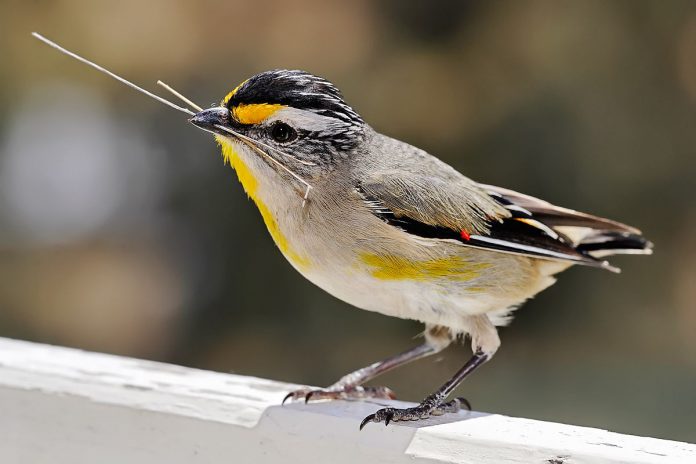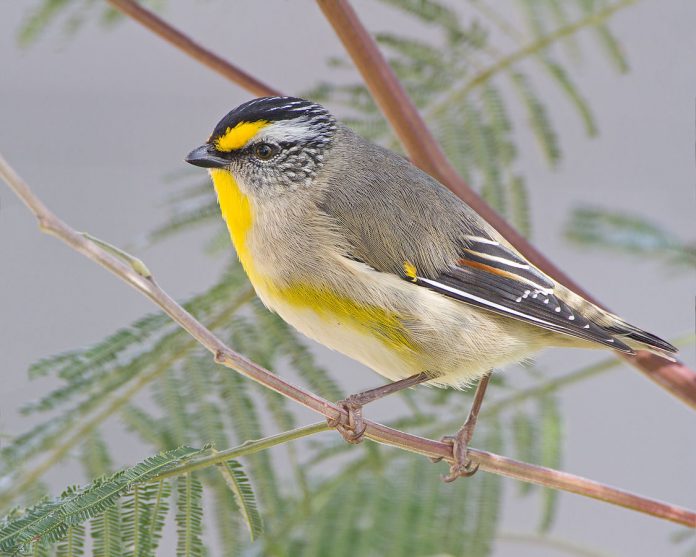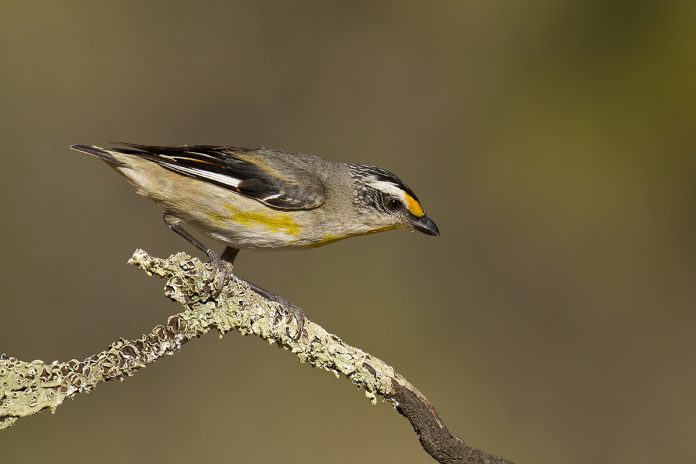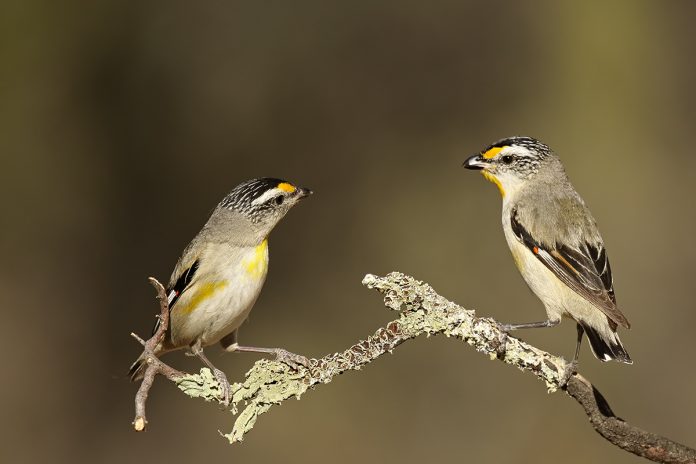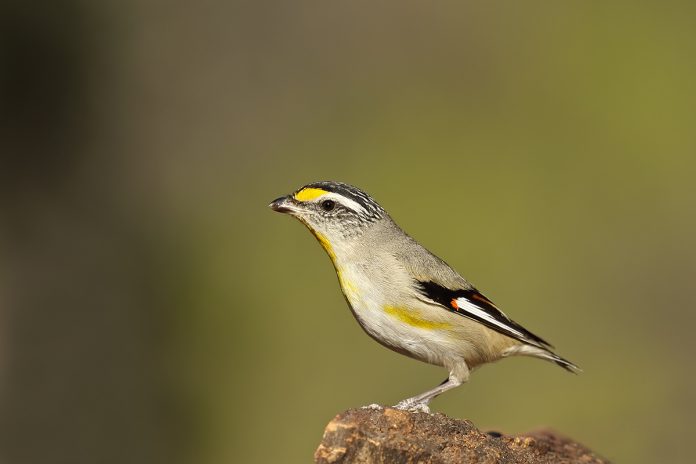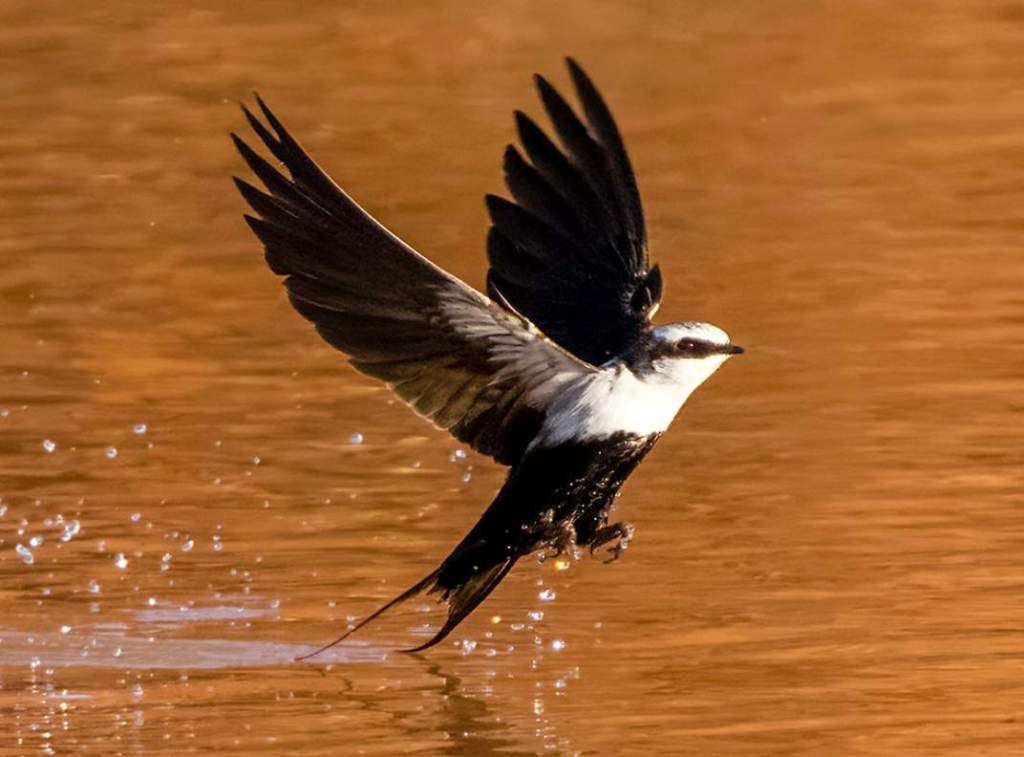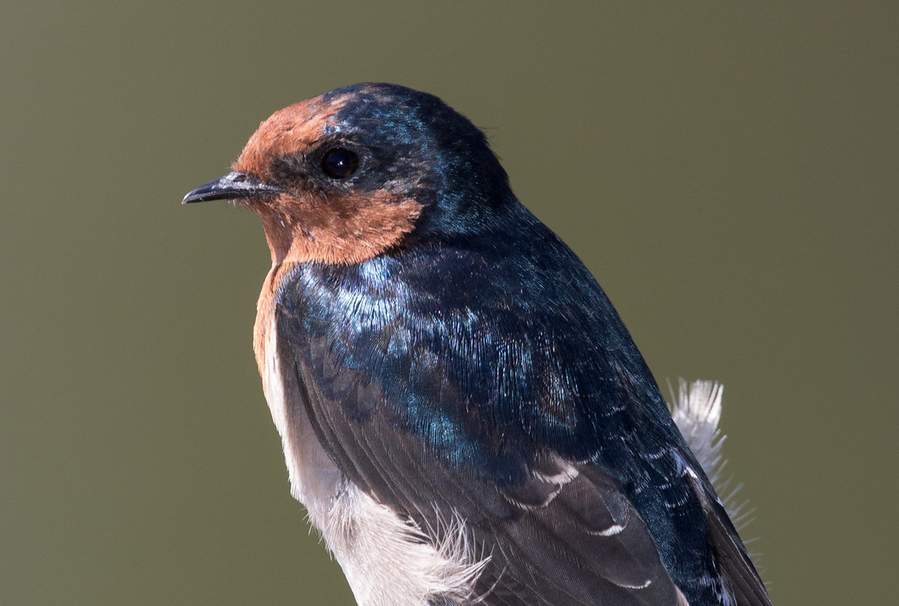The striated pardalote (Pardalotus striatus) is one of the largest of the small pardalotes. It is also the most widespread and nomadic bird. It frequents more open eucalypt forests and woodlands than other pardalotes, and, following the river gum galleries along watercourses, it ranges right across the inland. Throughout the north, it is more sedentary, dispersing locally after breeding but rarely wandering far.
A lot of southern populations nevertheless shift north, inland, and to lower altitudes in autumn and winter, often forming loose flocks of more than one hundred birds as they travel. Most but not all Tasmanian birds cross the Bass Strait and then winter on the mainland as far north as southeastern Queensland.
The stubby-tailed groups travel quickly from clump to clump of trees, flying high and bullet-like. Like other pardalotes, the Striated feeds in the crowns and outer foliage of eucalypts, creeping and running like a mouse, picking lerps and other insects—bugs, grasshoppers, beetles, cockroaches, weevils, ants, bees, wasps, flies, and caterpillars—from the leaves and outer twigs.
As they work, the birds trill softly and frequently. Males announce the coming of breeding with loud, punctuated chip songs from high, often bare vantage points. But the flocks return and disperse into pairs and small groups of six to nest in traditional areas.
In addition, no territory is defended, just the instant vicinity of the nest, whether a hole in a tree or stump, as is usual in southern populations, or a burrow in the ground. Both parents work to build the nest, incubate the eggs, take on the responsibility of feeding the young, and may be helped by additional members of their groups. All of them often cluster and display wing-waving around the nest entrance.
Northern black-headed populations, which usually nest in banks, begin breeding earlier than elsewhere to take advantage of dry ground during the winter dry season. The races of Striated Pardalotes have often been regarded as distinct species, but hybridize and intergrade wherever they meet.
It is also known as “Eastern Striated Pardalote,” “Black-headed Pardalote,” “Yellow-tipped Pardalote”, and “Red-tipped Pardalote.”. The striated pardalote length is about 100–120 mm. Both sexes are similar, or the crown of a female scalloped fawn in the north. The crown is black, with or without white streaks. Back grey-brown, or rufous or yellow on the rump.
The wings are black, with small red to yellow spots at the shoulder tip; outer flight feathers with narrow or broad white stripes; inner flight feathers edged rufous or white. However, the tail is black and tipped white. Brow stripe rich yellow to white over eye; black stripe through eye over cheeks plain or flecked grey-white The underparts are all cream-white, with a yellow line down the center of the throat forking over the sides of the breast.
The eyes are tan-grey, and the bill is black, along with dusky brown feet. The immature bird is an adult, but its crown and face are olive-grey, and its brow is all cream. The call of Striated Pardalote is repeated soft trills in contact; soft cheeoo or pee-ew, pee-ew. Therefore, the song of Striated Pardalote is loud, sharp, stuttered chips that run together in four to five syllables on the same pitch, repeated in rapid-fire bursts: chip-chip, pik-pik, pik-it-up, wi-di-dup, or wi-di-di-dup.
There is much dialectic variation, even in local populations. The nesting and breeding season is June–January. The bird builds a cup-shaped nest, partly domed or domed, of grasses, bark fiber, and rootlets, sometimes lined with feathers, placed in a hollow of the post or tree 12 m or higher, or at the end of the nest, a burrow dug into the side of a cliff, creek bank, roadside cutting, or building.
The bird lays 3–5, usually four, white, oval eggs about 20 x 15 mm. The incubation process is performed by both sexes. The distribution of Striated Pardalote is almost the whole of Australia and Tasmania, in open eucalypt forest and woodland.
Read More: Bohemian Waxwing: Gorgeous Yellow Tip Tail Bird
